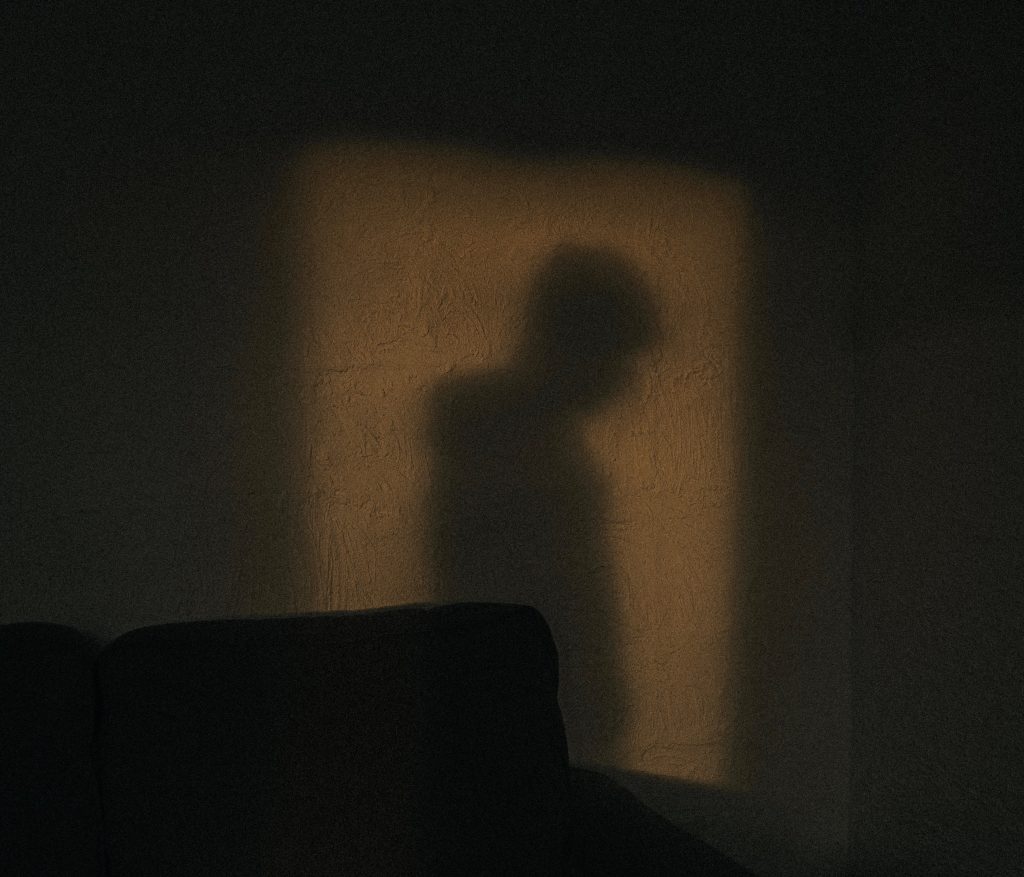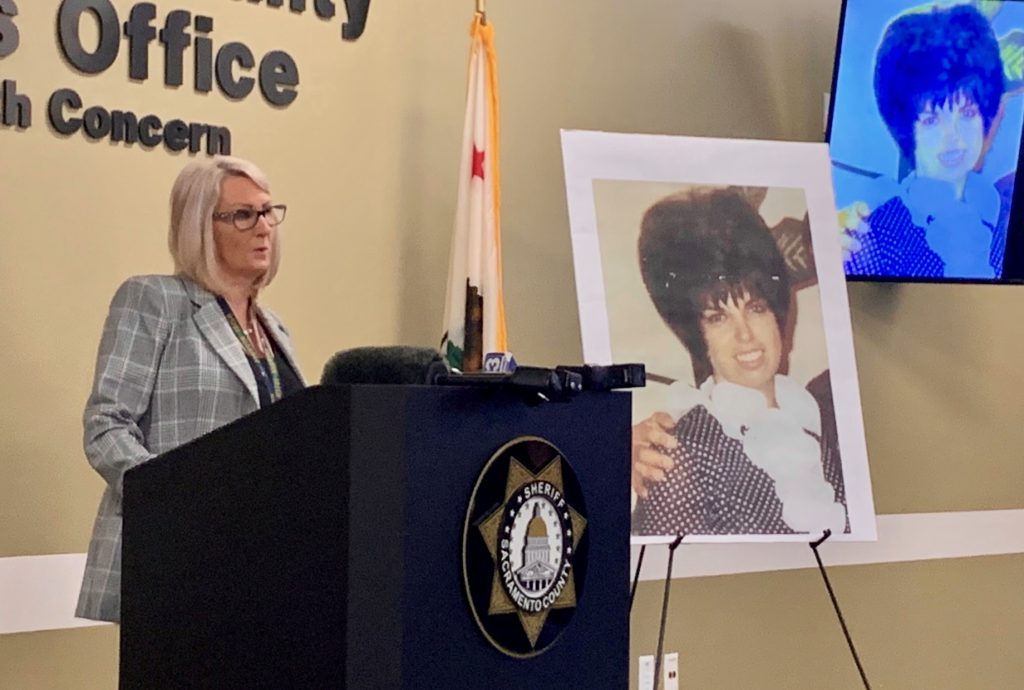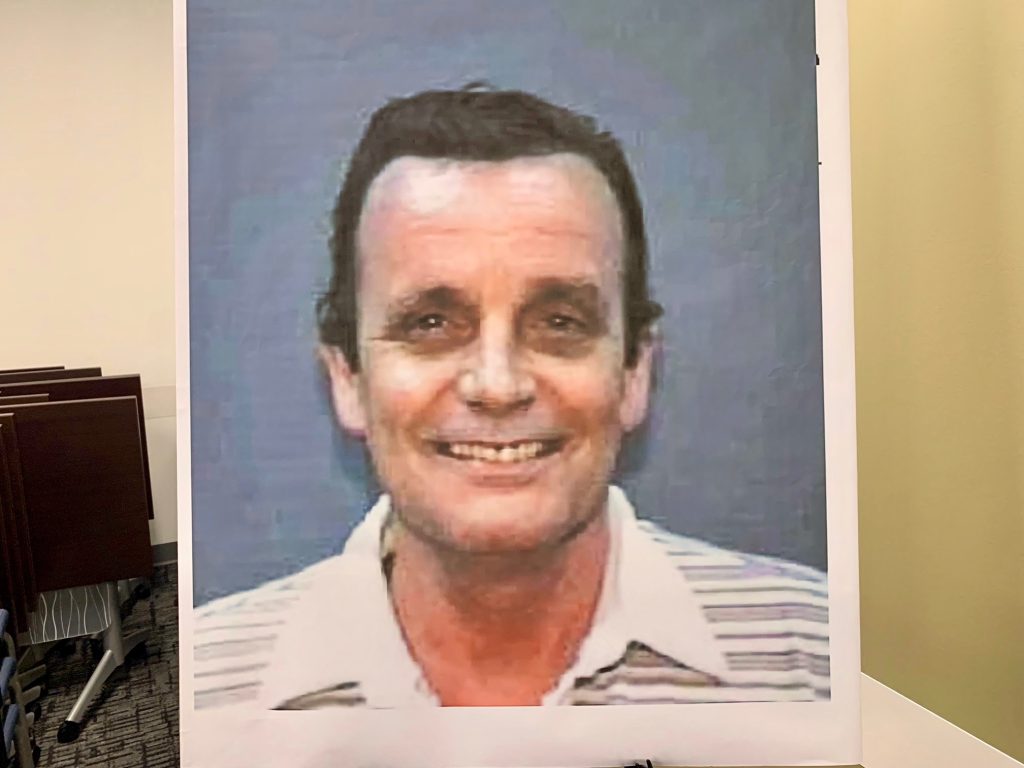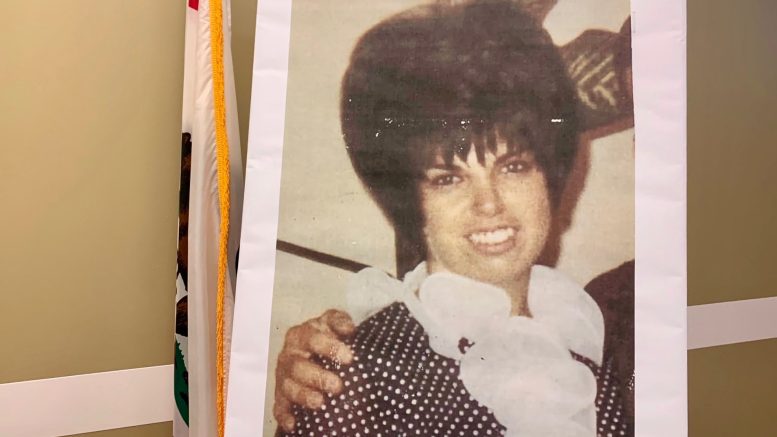A case that investigators never gave up on becomes the oldest homicide ever solved in Sacramento history
Reflecting on the ominous nature of bloodshed, Nic Pizzolatto wrote, “Time is a flat circle.”
Sacramento County Sheriff’s detectives may have had a sense of that last month – some feeling of the years shifting back and around – as they discovered that an unknown murderer who shook the legal system to its core five decades ago had been pacing by their sights from the very beginning. For the length of their department’s living memory there was a cloudy question that had never dissolved: Who slipped through a window one night to slash a beloved court reporter to death in her own apartment? Who brought the knife down on the fiancé of Sacramento’s Chief Public Defender? An army of deputies and detectives worked to answer that as two generations of law enforcement passed the torch to a third.
On July 21, a Sheriff’s investigator who helped bring the Golden State Killer to justice finally unlocked the mystery. The man responsible for the carnage to 28-year-old Nancy Bennallack had lived in the same apartment complex as her, likely watching and stalking his prey for weeks from a unit that was just across the swimming pool.
“He had sight of her apartment,” said retired Detective Sergeant Micki Links, who’s been involved with the case since 2005. “We’re just going to surmise that maybe he had some kind of attraction to her …. Clearly, he intended to do what he did that night. I mean, this man put masking tape over every one of his fingers.”
Links and the Sheriff’s cold case team identified their assailant with the familial DNA sifting technique that previously unveiled the Golden State Killer. Now, this approach to genetic sleuthing had illuminated another very dark picture.
You Keep the Light On

Bennallack, who was set to marry well-known Sacramento lawyer Farris Salamy, lived on Bell Street a little past the north city line. She’d been with Salamy on the night of October 25th, 1970, possibility discussing their impending nuptials that were only a month away. Salamy bid her goodnight around 11 p.m. When he left, Bennallack was in her bed. The sliding-glass door to her upper balcony was open a little because she wanted her cat to get outside.
Bennallack didn’t show up for work the next morning. Eventually, a concerned friend met up with the manager for her apartment complex. The two decided to go into the unit. They found Beenallack inside her bedroom.
“The suspect stabbed the victim over 30 times,” Links recounted Wednesday afternoon. The detective had been reading off her notes, but stopped to take a long breath before the next words left her mouth. “He nearly decapitated her during this murder.”
Link’s predecessors who arrived that day quickly noticed a few things: The intruder had gotten into the apartment by climbing up onto the balcony and then sneaking through the slider. He had also left a blood trail back onto the sidewalk below and into the parking. At the point, Sheriff’s detectives assumed he’d peeled off in car.
Links noted there was a reason the killer was bleeding.
“The victim sustained numerous defensive wounds on her hands and arms,” Links said glancing up, “indicating that she fought with the suspect.”
Investigators rushed out to every hospital in the region, roaming through emergency rooms as they looked for any man who had a strange or unexplained wound. They took down the names of anyone who’d come through bearing cuts.
“Of course, with HIPAA these days, we’re not allowed to,” Links mentioned, “but they were able to get that list; and they actually talked to everyone on it. They were able to alibi all of them.”
Over the next month, Sheriff’s personnel contacted and interviewed more than 500 individuals. Looking back, Sacramento County District Attorney Anne Marie Schubert described their canvassing as an incredible feat, while acknowledging it ultimately brought them no closer to who they were looking for.
Bennallack’s death happened in the era before DNA. Investigators were able to match the slayer’s blood type, but this hardly narrowed the pool.
“That didn’t tell us anything,” is how Links put it.
As the weeks went on, as the months went on, as the years went on, people who worked at the Sacramento County court house – the many who had liked and admired Bennallack – would continue to ask Sheriff and DA investigators if there was any progress in the case. The only answer that was ever given in return was basically, “We’re trying.”
Some of the victim’s family began to feel the hope dripping out of them, little by little, as they endured what felt like an ocean of time.
“Truthfully, I was almost giving up on ever solving Nancy’s case,” her sister, Linda, wrote in a letter. “Then, we met Micki Links … Micki said she would never give up, and she didn’t.”
The eyes across the way

When Schubert first took to the podium Wednesday, she sought to make everyone contemplate just how distant the horror in Bennallack’s bedroom was from their own temporal reality. More specifically, Schubert wanted all present to feel the weight and gravity of blood spilled as far back as 1970.
“Ricard Nixon was our president, and the Watergate scandal was still two years away,” the prosecutor observed. “The Vietnam War was the center of American politics … Ronald Regan was not our president he was the California governor; and two days before Nancy’s murder, he was re-elected for a second term.”
Schubert brought her point home by stressing that Sacramento’s Sheriff when Bennallack was killed, John Misterly, has now been dead for over 40 years.
“That tells you how long we’re talking about,” she concluded.
A man who lived far longer than the Sheriff Misterly was Public Defender Farris Salamy. He passed away in 2014.
“No doubt always wondering who was the man who took his fiancé,” the DA thought aloud.
In 2004, investigators were able to use evidence from the blood trail outside Bennallack’s apartment to get a DNA profile on the person responsible. At that point, they could try to get a biological sample from any suspect that came on their radar and then compare it against that profile. The detectives were also continuously running the DNA against every single person in the growing state and federal databases for violent offenders. In 2008, the suspect’s profile was submitted to the state’s new familial DNA database.
“That answer never came,” Schubert acknowledged. “We did it again, and again, and again, and again – we did it four times. It was probably a record for how many times we were looking for someone in that databank that was related to Nancy’s killer.”
The case may have appeared impenetrably cold at that point, but everything changed in 2018 when a combination public DNA database like 23andMe and methods of forensic genealogy led to the capture of the Golden State Killer. The arrest came some 43 years after serial rapist and murderer, Joseph D’Angelo, started his crime spree.
In 2019, Links and the cold case team began using the same approach in Bennallack’s case.
A little over two weeks ago, they hit pay dirt, identifying the killer as Richard John Davis.
Davis had died in Sacramento County, reportedly of alcohol-related health issues, in November of 1997.
Working backwards, Links determined that, in 1970, Davis had been a 54-year-old living in Bennallack’s apartment complex. Davis was indeed one of the early individuals who had Sheriff’s detectives knocking at his door during the effort to contact 500 people.
“He actually was interviewed by investigators,” Links confirmed. “Normally, when we have a crime, we do a canvass of the area, especially in an apartment complex; and he was interviewed with his roommate …They kind of alibied each other.”
She added, “We don’t know. I think his roommate – maybe he snuck out after his roommate went to bed. But, when he was interviewed, I don’t think they saw a wound.”
Having gotten to known Bennallack’s sister over the years, Link experienced a brief choke of emotion as she summed up where the investigation was.
“Due to the fact that Richard Davis is deceased, sadly there won’t be any legal justice,” she said before glancing to victim’s sister seated behind her. “But Linda and Tom, I hope this brings you, Nancy, and your family some peace.”
The cold finger of the past

The Bennalalck revelation comes on the heels of cold case investigators across the region cracking other long-dormant cases. In those instances, the familial DNA process or new forensic technology often made the difference.
In early 2020, genetic genealogy allowed Sacramento police detectives to learn the identity of the man who’d viciously stabbed and bludgeoned a 17-year-old disabled girl to death in 1981. That victim was Mary London, and her crumpled corpse was discovered along a stretch of San Juan Road on a bleak winter morning. Investigators worked the case hard back then, but leads on who violated the Sacramento High 10th grader became increasingly elusive. Prior to familial DNA tactics, finding an answer to the nearly four-decade question of London’s death was all but unthinkable. Even once detectives finally knew London had been killed by Vernon Parker, it was of limited comfort – Parker himself had been murdered in 1982.
Around the same time London’s case closed, an arrest was also made in the brutal 1985 slaying of newspaper reporter Jane Hylton. That mystery was solved by going down a similar geological rabbit hole – one that led to 51-year-old Michael Green. He was a 17-year-old junior at Oakmont High in Roseville when Hylton was found dead. The crime scene was in El Dorado Hills. Hylton had suffered 29 stab wounds and a deep bite wound to her upper body. Initially, authorities arrested the wrong person. Ricky Davis, a 20-year-old when Hylton was killed, later found himself being taken into custody in 2005. Davis was sent to prison for nearly 15 years before advanced DNA tracing ultimately exonerated him. For him, it was saliva from the bite mark that proved once and for all he’d been falsely accused.
During the conference about cracking Bennallack’s case, the other Davis’s name did get brought up.
“Perhaps for me, as I leave this job at the end of this year, one of the most important [DNA cases] I’ve felt, in addition to all these other [arrests], is the exoneration of Ricky Davis,” Schubert told the gathering, “for a murder that he did not commit, and for which he spent 15 years in prison.”
After re-opening Hylton’s case – and examining DNA from the teeth lacerations on her – investigators learned Green had been spending time with the victim’s 13-year-old daughter on the night of the murder. Prosecutors say familial DNA processing then confirmed it was him. When investigators from Sacramento and El Dorado county district attorneys’ offices arrested Green, he was living a fairly tranquil life in Roseville.
Even as recently as last month, Solano County Sheriff’s detectives arrested 76-year James Ray Gary for strangling two women to death, the first murder occurring in the summer of 1980. That initial victim was a 46-year-old Latrelle Lindsay, who lived in Union City. Lindsay had also been raped. Authorities say that 16 years later, Gary attacked another 46-year-old woman – Winifred Douglas – and left her with a battered head and neck in some bushes along a highway where the Napa River meets San Pablo Bay. Her cause of death was listed as asphyxiation. Thanks to a DNA database at California Department of Justice, Solano sheriff’s detectives have known since 2012 that Lindsay and Douglas were killed by the same perpetrator. Last year, the North Bay Police Department started investigating a new sex crime that involved DNA evidence. When it ran a sample through the database, it got a hit that matched the killer at both the Union City and Vallejo scenes from the past – and matched Gary himself.
California law enforcement has been pouring new energy into previously unsolvable cold cases ever since the capture of the Golden State Killer. His prosecution served as a kind of proof of concept that voluntary entries into ancestry databases could be used as beacons within the vast grey shroud of the human genome, lighting the way to smaller and smaller sets of potential suspects, who can then be considered against other evidence in a given case.
Schubert, who was instrumental in Golden State Killer’s arrest, saw a much broader story in the end of Bennallack’s saga. What she saw was the hope for many more reckonings.
“There is no doubt that justice in the case was dormant,” Schubert said. “Is it a miracle that we’re standing here today? I think perhaps for Nancy’s family it is. And I would remind you all that time is the justice that examines all offenders. Nancy was never forgotten.”
Scott Thomas Anderson is also the writer-producer of the true crime podcast ‘Trace of the Devastation’


Loose ends in the Bennellack case.
Richard John Davis was living in the same apartment complex as the victim. Police interviewed him and his roommate. They alibied each other! Did they check carefully both men for any cuts? The killer was injured from the attack leaving blood evidence. Were their prints taken? A partial palm print was found on the scene. Did they check their apartment for evidence? Did they check their cars?Did they interview them separately? Did they polygraph them?A deep footprint was found from when the killer or Davis landed after he jumped for the balcony area.Were the shoes of both men taken to check for a match and for evidence. Nancy had a cat. They shed. Did they search for cat hairs at the room where both men lived? Did their blood type match the killers? No DNA but if a type is matched to the killer at least it’s something to be combined with all evidence.
It shockingly seems none of these things were done!